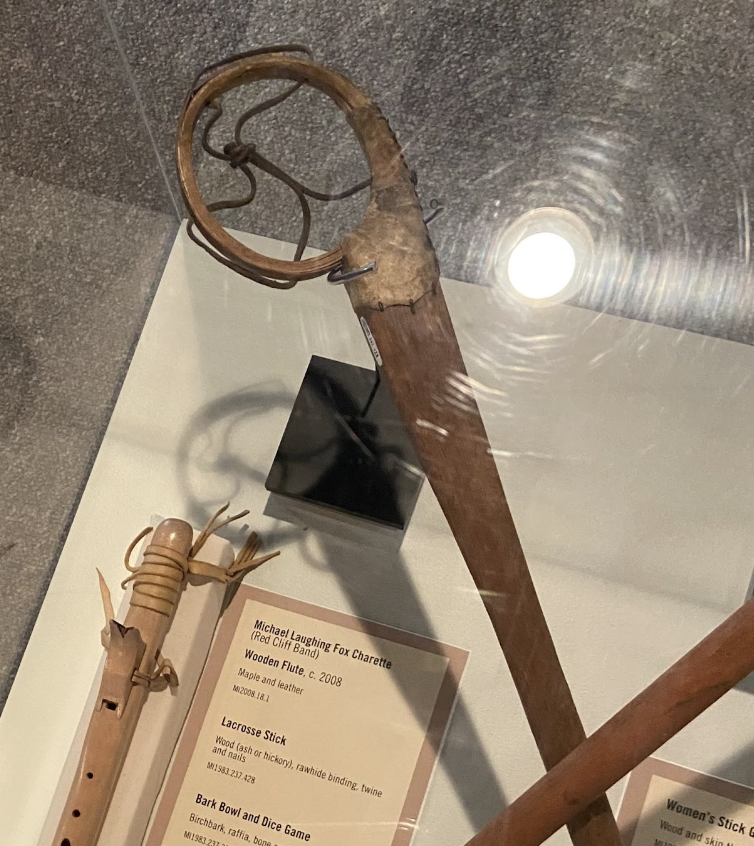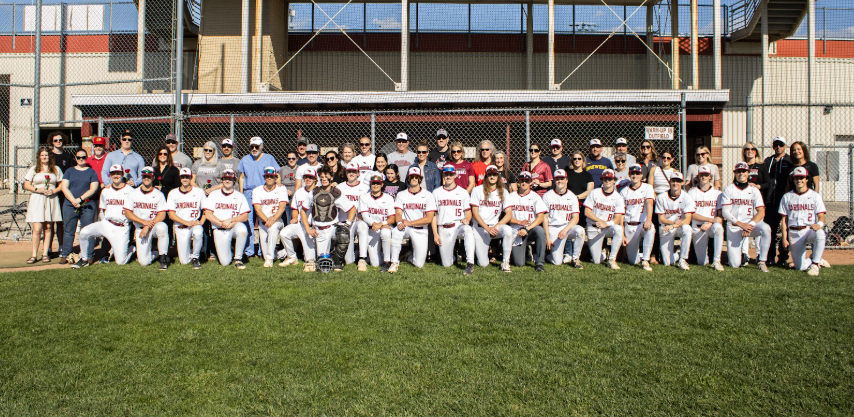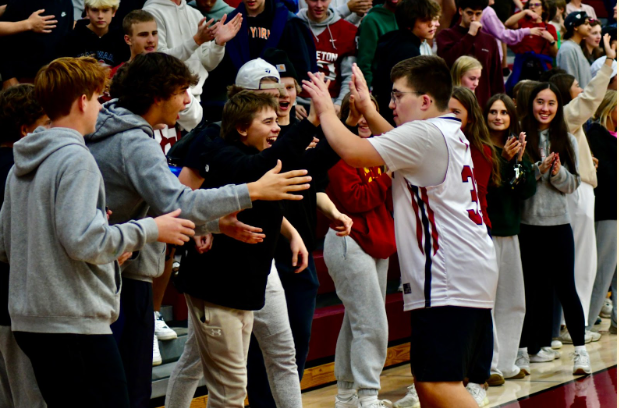March 11 marked a groundbreaking season opener for men’s and women’s lacrosse in Wisconsin. For the first time, lacrosse is now considered an official Wisconsin Interscholastic Athletic Association (WIAA) sport – making Wisconsin the 23rd state to officially sanction the sport, according to USA Lacrosse. This is the first time a sport has been added since 1983, when girls’ and boys’ soccer joined the WIAA ranks. The transition has been celebrated throughout the Midwest for cementing lacrosse into the state’s athletic culture, despite causing confusion in conference status, scheduling headaches and team eligibility.
In recognizing this historical landmark for the sport, however, its complicated and difficult history must be considered. The oldest organized sport in North America, lacrosse was invented by the Haudenosaunee people in what is now New York and areas in Canada. According to History, the earliest records of lacrosse date back to 1100 AD.
Originally named Dehoñtjihgwa’és (meaning “they bump hips”), lacrosse is much more than a sport to its creators. At its beginning, anywhere from 100 to 1,000 men played at one time, armed with wooden sticks with leather pockets and a deer hide ball. Lacrosse games took on many forms: social events, medicinal and spiritual healing, coming of age rituals, and even preparation for war. The Haudenosaunee, a confederacy of six different nations (including the Onondaga Nation), often used the sport to resolve conflicts over land, resources and laws. Early playing fields had no borders, often spanning for miles, and games could last several days. The sport itself has deep cultural and spiritual significance, with many Indigenous oral traditions including lacrosse in their creation stories.
Onondaga Nation member Neal Powless, a former professional player for the Iroquois Nationals lacrosse team and a three-time collegiate All-American, described one belief that “when we play the game, we always say that there’s a simultaneous game going on in Sky World and our ancestors are playing with us.”
Other creation stories tell of the first lacrosse game between all the animals of the forest, who gathered for a great ballgame between the four-legged mammals and the winged birds. Believed to be a gift from the Creator, lacrosse is also referred to as the Medicine Game. Traditional and ceremonial lacrosse games are still played in Haudenosaunee and Onondaga communities (among others) to heal the sick, forge connections between all ages and celebrate the sport’s importance.
However, much of lacrosse’s cultural identity was destroyed when the sport was appropriated by Europeans in the 1600s. French missionaries in Quebec, Canada observed Native communities playing the game, and created their own version named “La Crosse” for the sticks’ resemblance to a bishop’s cross. This new sport borrowed much of the Indigenous game, such as its sticks and baskets, but had much stricter rules on player amount and field size.
According to the Onondaga Nation, “It was very common for Onondaga to play Syracuse University, Colgate University and Army in the early 1900’s with the outcome favoring the native teams.”
While early teams and competitions in Canada were a mix of First Nations and European peoples, the sport quickly became exclusive to wealthy, white Europeans. As the Onondaga Nation explained, “with the success of the Onondaga team and other native teams against the collegiate teams, the USA Lacrosse association banned all native teams from playing “field Lacrosse” as they felt that the natives were “professional” players.” These new rules and exclusions effectively separated modern lacrosse from its rich cultural value, and distanced it from the very people who created it.
Despite these barriers, lacrosse persisted in Indigenous Nations, adapting into what is known today as “box lacrosse.” The Onondaga people and the greater Haudenosaunee community, among a growing movement of other Indigenous nations, fought for recognition of the true roots of the sport, and for Native teams to be given their rightful place in competitions.
Today, their hard work is finally paying off, with many Native teams such as the Onondaga Red Hawks dominating both box and field lacrosse. Traditional lacrosse sticks crafted by hand out of wood and leather are also gaining popularity, increasing awareness of the sport’s origins.
It was not until the early 2000s that lacrosse was introduced to Wisconsin high schools, and slowly trickled down until a booming youth and club community emerged. Today, hundreds of teams flock to Wisconsin from across the country to compete. The growing popularity of lacrosse in Wisconsin is exciting, but should remind us to look back on the sport’s history with respect and admiration for the Indigenous people who created it, and fought for their rightful spot on the global playing field.
This spring, Middleton High School prepares for another thrilling season of girls and boys lacrosse; joining the Onondaga and Haudenosaunee players, who “extend their hand to everyone to join them in preserving and playing the oldest team sport in North America, Dey-Hon-Tshi-Gwa’-Ehs.”









